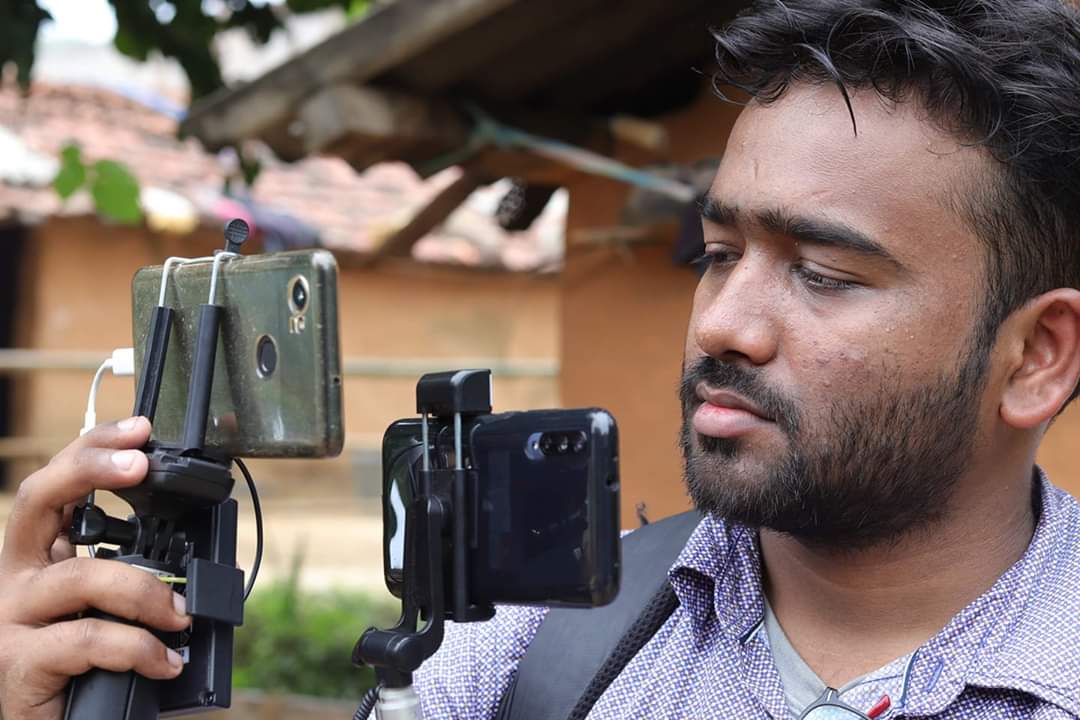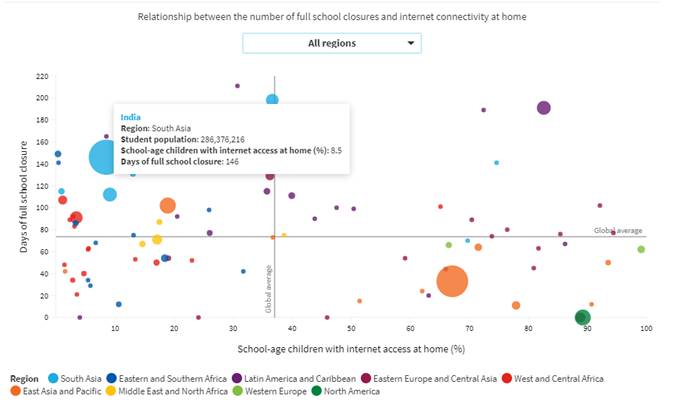Merely 8.5% school students in India have internet access, education disruption due to COVID-19 second worst in South Asia: UNICEF
The UNICEF report stated that amongst the south Asian countries, internet access is available to 74.6 per cent students in Sri Lanka, 69.7 per cent students in Bangladesh, 36.6 per cent in Nepal, 9.1 per cent in Pakistan, 8.5 per cent in India, and 0.9 per cent in Afghanistan.


Children living in deprivation are at the highest risk of never returning to the classroom and of being forced into child marriage or child labour. Online education, UNICEF reiterated, could never be a substitute for school education. (Photo: UNICEF)
According to a report released by the United Nations Children Emergency Fund (UNICEF), merely 8.5 per cent students in India have access to the internet — a technological handicap that is at the cost of the children’s right to education amidst the COVID-19 pandemic and the resulting closure of schools.
The report also stated that amongst the south Asian countries, internet access is available to 74.6 per cent students in Sri Lanka, 69.7 per cent students in Bangladesh, 36.6 per cent in Nepal, 9.1 per cent in Pakistan, 8.5 per cent in India, and 0.9 per cent in Afghanistan.
The UNICEF report titled ‘COVID-19 and School Closures: One year of education disruption’ stated that as a result of the pandemic, lockdowns and the subsequent closure of schools impacted 201 million students worldwide. Out of these, 170 million students had no access to education for the past one year.

Going by sheer number of the school students affected by absence of internet access, India – being the most populous country in the region, is the worst performer as per the UNICEF report.
Also, next to Bangladesh which witnessed 198 days of schools’ closure, India recorded 146 days of school shutdown. Sri Lanka recorded 141 such days, Nepal 131, Afghanistan 115, Pakistan 112 and Maldives witnessed 70 days of school shutdown.
Also, a UNICEF press release stated that online education was not an option for these children as only one in four children (25 per cent) in the world had mobile phone and internet facilities, and most of them were from socially and economically disadvantaged communities.
Also Read: Education on hold: Amid the COVID lockdown, children in rural India will suffer the most
The UNICEF report indicated that under the given circumstances, the school drop-out rate which is already high in India, may escalate further. More than six million boys and girls in India were unable to access school education even before the outbreak of COVID-19 and the pandemic is feared to have only pushed this number higher.

“With every day that goes by, children unable to access in- person schooling fall further and further behind, with the most marginalized paying the heaviest price,” Henrietta Fore executive director, UNICEF, stated while releasing the report.
Also Read: In the midst of COVID-19, education technology – EdTech – has become the need of the hour
UNICEF had ruled out online education as a singular solution for all as it observed only one in four children have digital devices and internet connectivity and feared the digital divide in education would further widen due to COVID-19. In view of this, UNICEF argued for opening up of the schools or providing some other option for children’s education by the governments.
Secondary and higher secondary schools have reopened in various states of India since February. Primary schools have also reopened in some states since March1.
However, there has also been a surge in the number of COVID-19 patients in many states since the opening of schools, with COVID-19 cases being reported from several schools.
So far, only eight states/Union Territories in the country have reopened schools fully, while 11states have reopened schools for classes six to twelve. Fifteen states have reopened schools for classes nine to twelve, and three states have reopened their anganwadi centres.
A grave setback
UNICEF pointed out that the closure of schools has also had a grave impact on children’s psychological health. Children living in deprivation are at the highest risk of never returning to the classroom and of being forced into child marriage or child labour. Online education, UNICEF reiterated, could never be a substitute for school education.
A survey conducted by the Azim Premji University in January-February, 2021 revealed that the sustained closure of schools for about a year due to COVID-19 has gravely affected the learning capacity of children. According to the survey, instead of learning something new in online classrooms, children are forgetting what they learnt in their previous classes. While 82 per cent of students had forgotten mathematics lessons, 92 per cent were backward in terms of language. The report attributed this due to non-direct communication of the teacher-student and ineffective functioning of online classes.
The Right to Education Forum in collaboration with the Centre for Budget and Policy Studies and UNESCO’s initiative, Champions for girls education also conducted a study in NCR Delhi, Uttar Pradesh, Bihar, Assam and Telangana. It found that COVID-19 was having an adverse effect on the school education of girls, and that their dropout rate was expected to rise. Boys are being given priority over girls in online studies due to lack of computers or adequate number of mobile phones at home, the survey found.

